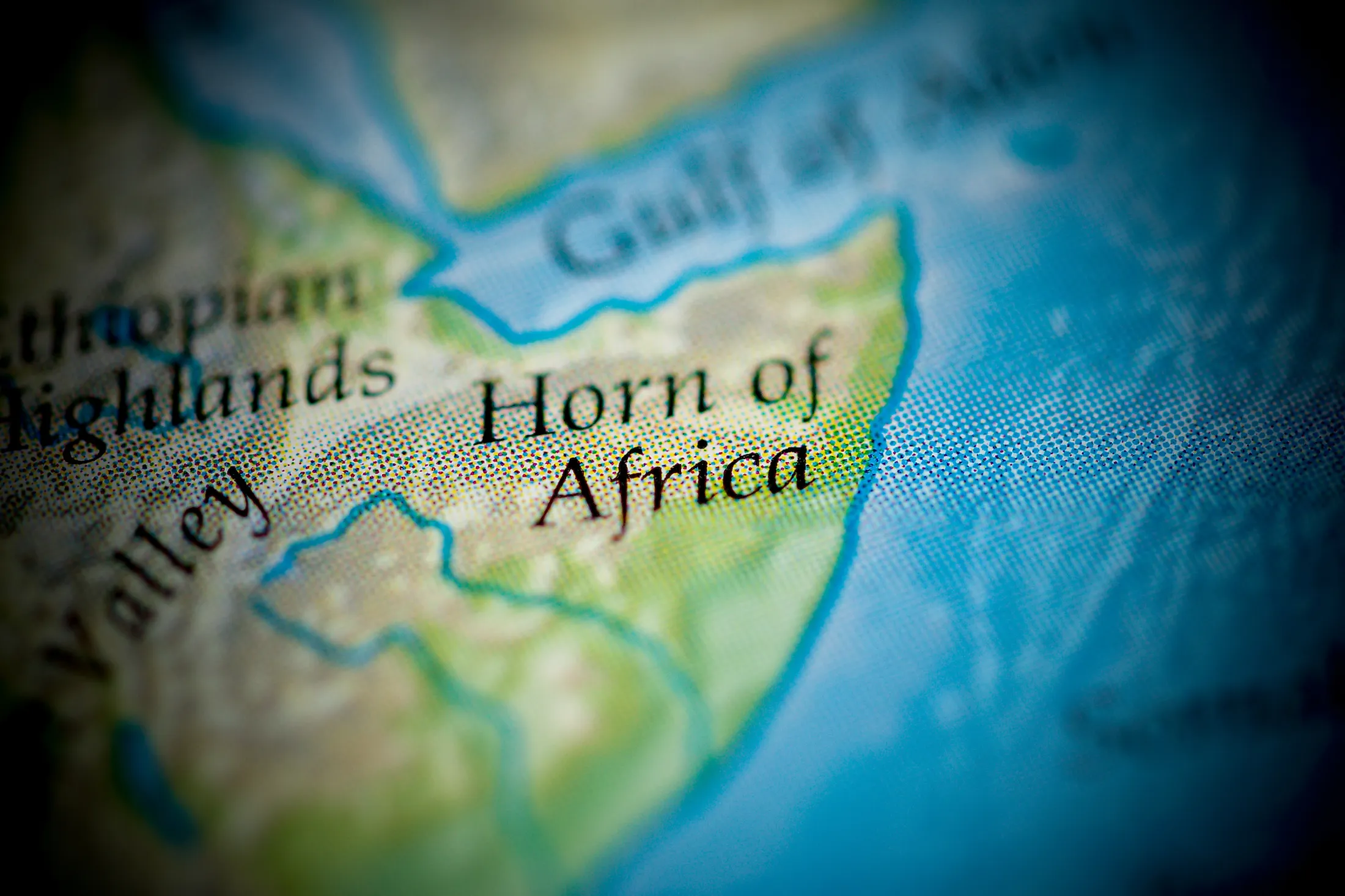
Horn Of Africa
Africa is conventionally divided into five major regions; Southern, Northern, Central, Western, and Eastern Africa. Eastern Africa, also known as East of Africa or East Africa, is one of the largest regions, comprising 18 countries. Within the East African region are other sub-regions, including the East Africa Community, the African Great Lakes Region, and the Horn of Africa. The Horn of Africa is the continent’s easternmost extension comprising Ethiopia, Eritrea, Somalia, and Djibouti whose culture and history have been connected over the past years.
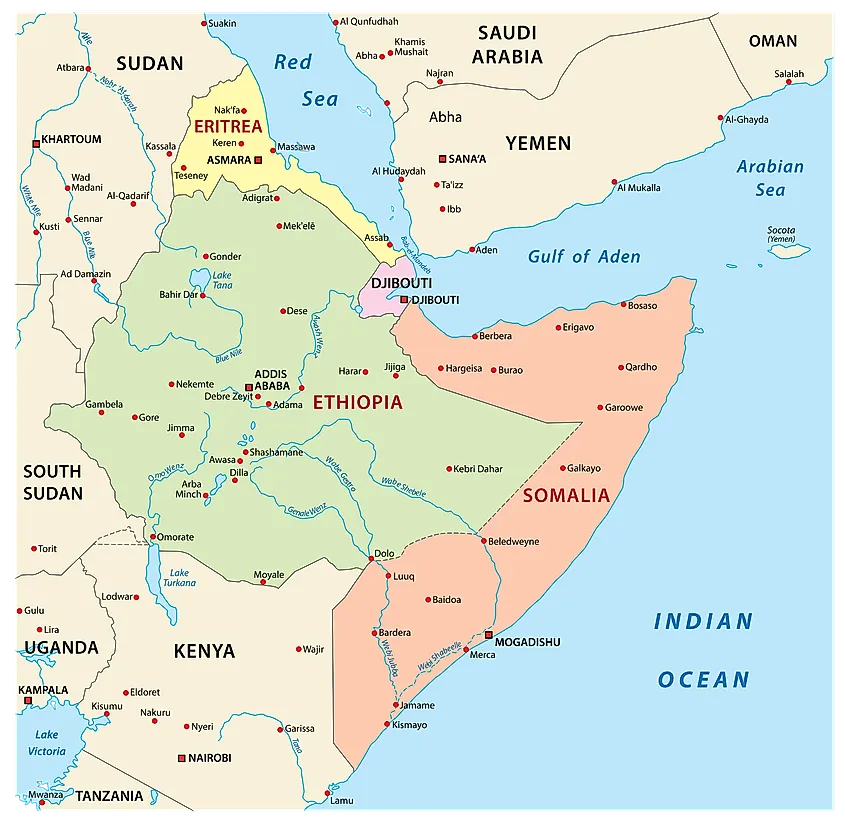
Definition And Extent
The Horn of Africa region occupies Africa’s easternmost peninsula, which extends into the Guardafui Channel, Somali Sea, and the Gulf of Aden. The peninsula’s northern boundary lies on the Red Sea’s southern coast. The Horn is home to four Eastern Africa countries, Somalia, Ethiopia, Djibouti, Eritrea, and disputed Somaliland. However, other definitions of the region exclude parts of Eritrea, Djibouti, and Ethiopia, while a broader definition includes parts or all of Uganda, Kenya, South Sudan, and Sudan. The Somali Peninsula is part of the Horn of Africa and is a term used to refer to eastern Ethiopia and Somalia.
Geography
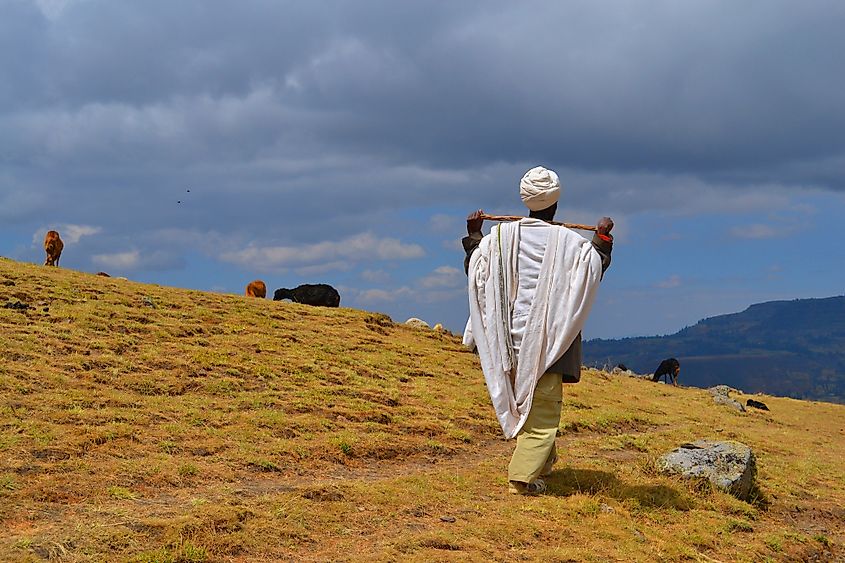
The Horn of African is a region that is recognized internationally as comprising Somalia, Ethiopia, Eritrea, and Djibouti. This region covers approximately 2 million square kilometers, with Ethiopia as the largest country, covering over half of the region’s area (1.1 million square kilometers). The region contains diverse land features, including the Somalian and Eritrean coast, Ogaden desert, and Ethiopian highlands. It has coastlines on the Gulf of Aden, Red Sea, and the Indian Ocean.
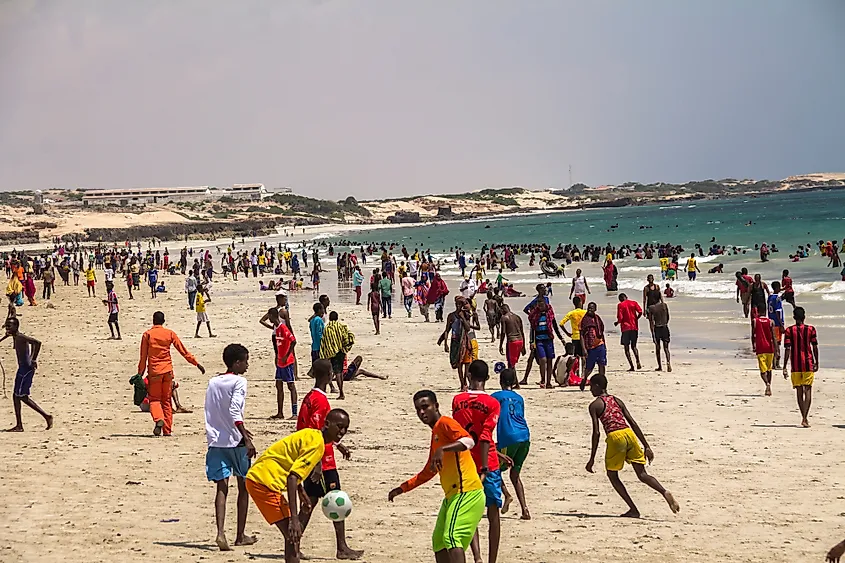
The Horn of Africa is separated from the Arabian Peninsula by the Bab el-Mandeb Strait (the strait connecting the Red Sea and the Gulf of Aden). Up to 18 million years ago, Yemen and the Horn were a single landmass. However, the Gulf of Aden’s rifting separated the Arabian Peninsula and the Horn region. Part of the region, particularly Somalia, sits on the Somali Plate, which also includes the neighboring Madagascar Island.
The Horn’s arid lowlands contrast the wet Ethiopian mountains, which receive plenty of rain (over 2,000 mm) throughout the year. The lowlands are particularly dry because of the tropical monsoon effects. The tropical monsoons originate from the west, resulting in seasonal rains in Sudan and the Sahel. Thus, the monsoons’ moisture is lost before reaching Somaliland and Djibouti. The northeasterly winds, common during winter, provides rain only in Somalia’s mountainous areas.
Climate
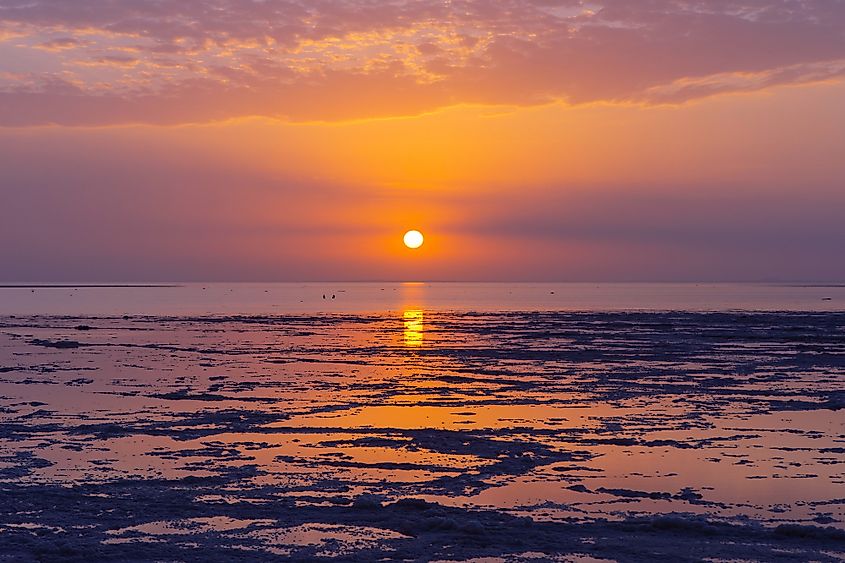
The climate varies greatly by region, with lowland areas being hotter while plateaus experience a temperate climate. Addis Ababa experiences highs of 79 degrees Fahrenheit and lows of 39 degrees Fahrenheit. The Danakil Desert is an arid region in southern Eritrea, northeastern Ethiopia, and northwestern Djibouti, covering approximately 100,000 square kilometers. It is one of the driest, hottest areas in the Horns, with daily temperatures reaching over 45 degrees Celsius. Somalia and the disputed Somaliland experience hot conditions throughout the year, with mean daily temperatures ranging from 82 to 109 degrees Fahrenheit. However, higher elevations experience slightly lower temperatures.
Flora And Fauna
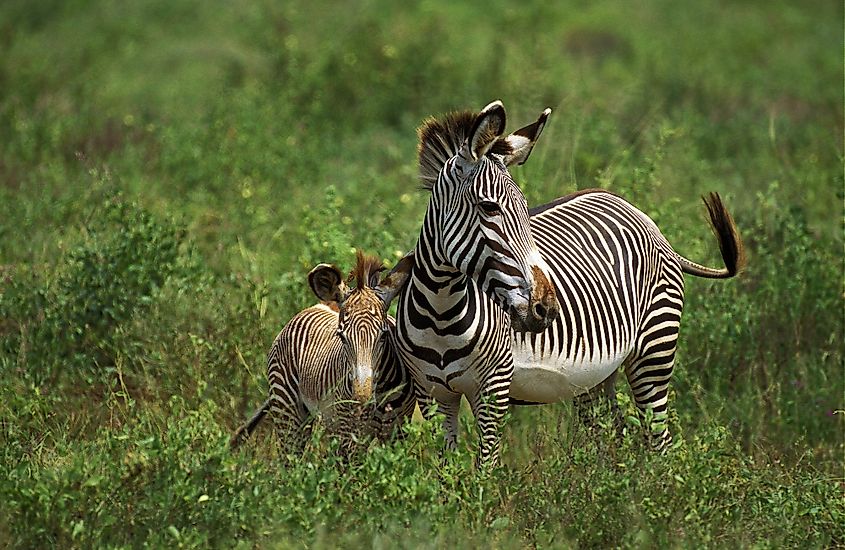
The Horn of Africa hosts about 220 mammal species, including the threatened antelope species such as silver dikdik, and Clark’s gazelle. Other common species in the region include the Grevy’s zebra, Dunn’s gerbil, desert warthog, Somali wild ass, and ammodile. Common predators are Stripped and Spotted hyenas and the African leopard. The Horn also contains numerous bird species, including golden-winged grosbeak, black boubou, and Djibouti spurfowl. The region also hosts the highest number of endemic reptiles than any other part of Africa. Of the 285 reptile species, 90 are endemic. There are about 5,000 vascular plant species in the Horn, of which over 2,000 species are endemic. Most endemic species belong to two plant families; Dirachmaceae and Barbeyaceae
Brief History
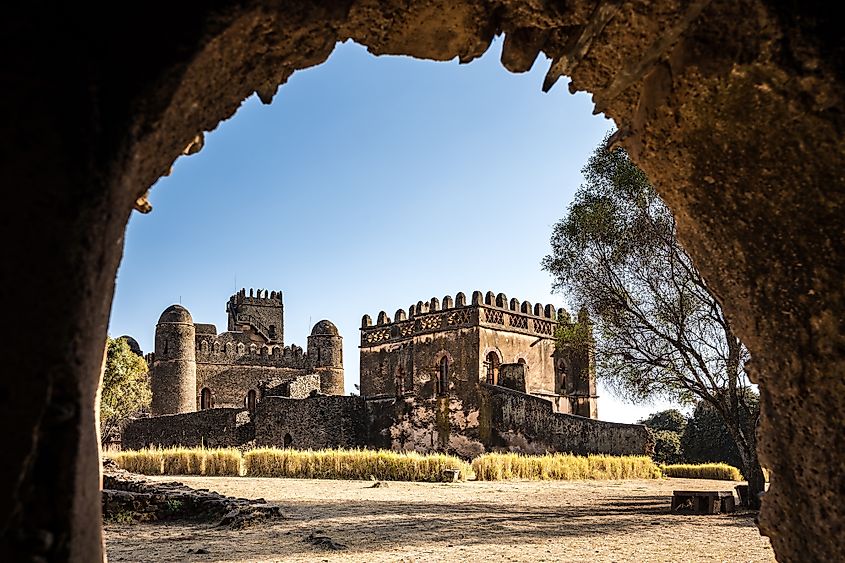
The Horn of Africa, mainly through the Bab el-Mandeb Strait, served as the southern migration route Out of Africa. The strait was much narrower and the sea level much lower, facilitating easy migration onto the Arabian Peninsula and the Middle East. Part of the Horn (Sudan, Eritrea, Djibouti, Somalia, and the Red Sea coast) may have been the location for the Punt (god’s land).
One of the earliest kingdoms that reigned over the region was the Macrobia, reputed for its wealth and architecture. However, the kingdom collapsed, leading to the rise of ancient city-states near Cape Guardafui from the 1st Millennium BC, including Essina, Opone, Nikon, Sarapion, and Damo. These small city-states dominated the Somali Coast and developed competitive trade networks in an ancient region known as Barbaria.
The D’mt Kingdom dominated northern Ethiopia and Eritrea from the 8th to 7th Century BC, where they flourished in agriculture and weaponry. The Kingdom of Aksum thrived in Ethiopian highlands and Eritrea from 1st to 7th Century AD and facilitated trade between Ancient India and the Roman Empire by minting their currencies. It was the first major kingdom to adopt Christianity.
The birth and spread of Islam on the Arabian Peninsula meant that the new religion influenced the Horn region through merchant and Arabs traders arriving there. The ancient city-states adopted the new religion, eventually transforming into Islamic Mogadishu, Merka, Barawa, Zeila, and Berbera.
The Middle Ages were characterized by the emergence of powerful empires, including the Ajuran, Adal Sultanate, Zagwe Dynasty, and Gobroon Dynasty. These empires controlled much of the trade in the region and developed historic cities such as Maduna, Zeila, Berbera, and Abasa. The cities featured numerous shrines, mosques, and courtyard houses. Following the opening of the Suez Canal in the 19th century, the European powers began scrambling for the territory. The Italians occupied Ethiopia and colonized Eritrea, while France occupied Djibouti. The British and Italian shared Somalia.
Demographics And Languages
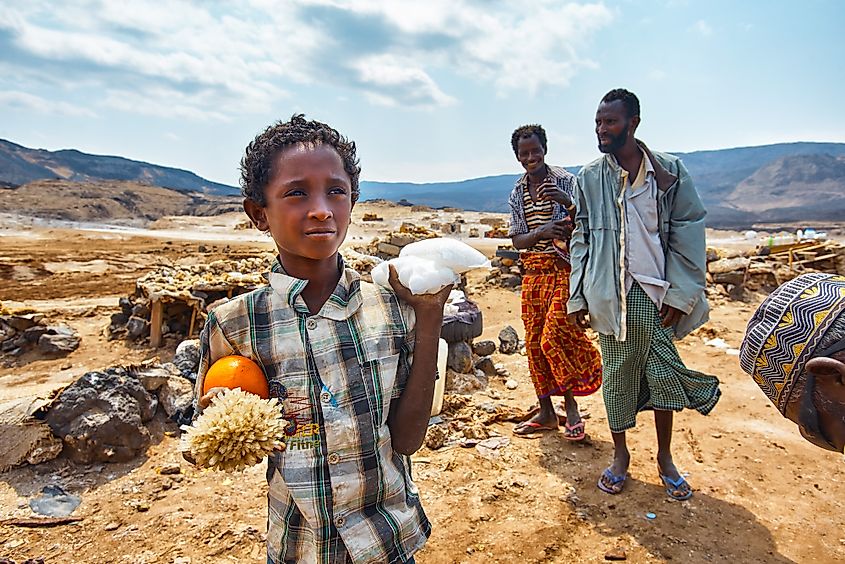
The Horn of Africa has an estimated 140.7 million people, about 11% of Africa’s total population. Ethiopia is the region’s largest country, with 112 million people, about 80% of the region’s total population. Somalia is the second most populated country, with 16.3 million inhabitants. With about one million people, Djibouti is the Horn’s smallest country.
The Horn of African countries are linguistically and ethnically linked. The ethnic groups are divided into two main groups; the Cushite and Highlanders. About 130 languages are spoken throughout the region, including 90 in Ethiopia, 10 in Djibouti, 15 in Somali, and 14 in Eritrea. The major Afro-Asiatic languages include Somali, Oromo, Amharic, Tigrinya, Hadiyya, Afar, Agaw, and Saho. The Omotic languages, spoken mainly in southwestern Ethiopia, include Dizi, Aari, Kafa, and Gamo.
Religion
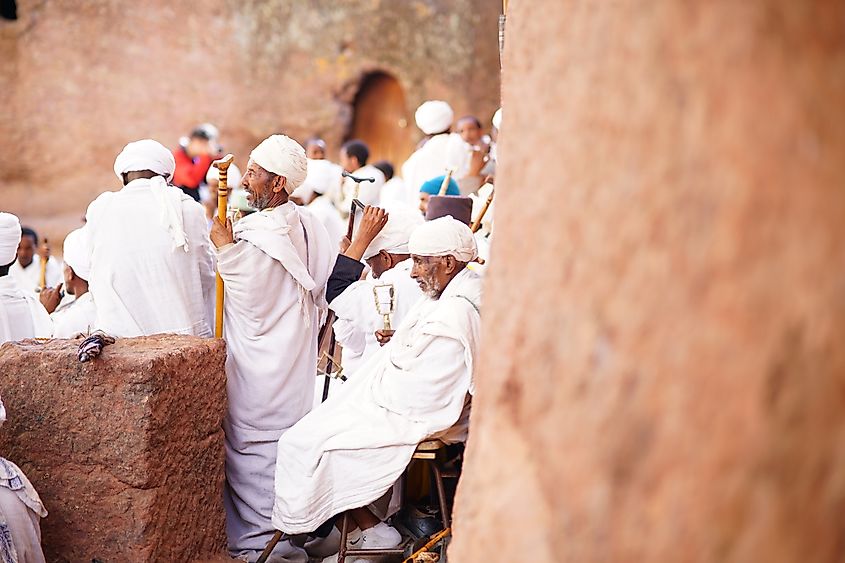
Christianity, Islam, and Judaism are the three common religions practiced in the Horn of Africa region. Islam was introduced into the area, mainly the Somali Coast, from the Arabian Peninsula, after the hijra. Zeila’s Labo-Qibla mosque is Africa’s oldest mosque. The population of Djibouti and Somali are predominantly Muslims. Up to 94% of Djibouti’s population observe Islam, while 99.8% of Somalians adhere to the religion. In Eritrea, 36% of the population are Muslims.
The majority of Eritreans and Ethiopians are Christians. About 63% of Eritrea’s population practice Christianity. In Somalia, less than 0.1% of the population is Christian, while religion makes up 62.8% of Ethiopia’s population. In Ethiopia, the Ethiopian Orthodox is the largest Christian group, with 43.5% of the entire population practicing it.











